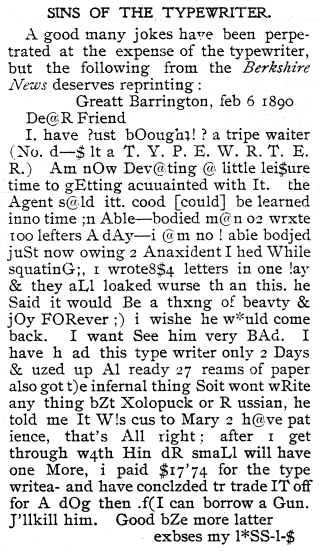
Possibly an example of a smiley from 1862: “(applause and laughter ;)”. From a transcript in the New York Times of an Abraham Lincoln speech.

Possibly an example of a smiley from 1862: “(applause and laughter ;)”. From a transcript in the New York Times of an Abraham Lincoln speech.


What seems to be a smiley from 1648 (top image), written by the poet Robert Herrick, is most likely not. The same book contained more smilies (bottom image) that indicate that it’s not supposed to be read as an emoticon. See Slate’s article for more examples and information.




csajozós.gif by namost
Members of the <3 (-: O religion claims to have created the largest ASCII mandala.
the cryptically cute and stoic emoticon religion, <3 (-: O , use emoticons as a surrogate for physically expressing all emotions. they also combine emoticons and ascii art into powerful sigils used in meditation. recently several large international conferences have been convened to stoically share new developments within the emoticonic community. at one of these conferences, members constructed the largest ascii mandala currently in existence.
from the Library of Sacred Technologies
Emoticons/emojis created by layering several text characters on top of eachother (overstriking). These instructions are from 1976, and might have been around as early as 1972.
This technique was possible on the amazing 1970s PLATO computer, and probably never again after that? You could also move the text-chars around on a pixel level. Pictures/info from platopeople.com.
How were these things done? Well, on PLATO, you could press SHIFT-space to move your cursor back one space — and then if you typed another character, it would appear on top of the existing character. And if you wanted to get real fancy, you could use the MICRO and SUB and SUPER keys on a PLATO keyboard to move up and down one pixel or more — in effect providing a HUGE array of possible emoticon characters.

Leetspeak and possible emoticons from 1890. Found by Koichi Yasuoka, who writes:
The article shown right is from The Typewriter World (Chicago), Vol.I, No.2 (October 1897), p.46, which I found in The New York Public Library. You see the sentense “he Said it would Be a thxng of beavty & jOy FORever” is followed by a combination of punctuation marks, a semicolon and a right parenthesis, which is one of the so-called emoticons nowadays. I cannot make sure that it was really intended to represent a winking smile, but I need to check Berkshire News (Great Barrington, Massachusetts) of February 6, 1890. How do you think about this?
Emo & Tick by Rita Sá. Animation series mostly from 2010-2011 but also 2021-2022.
(post updated in 2024)